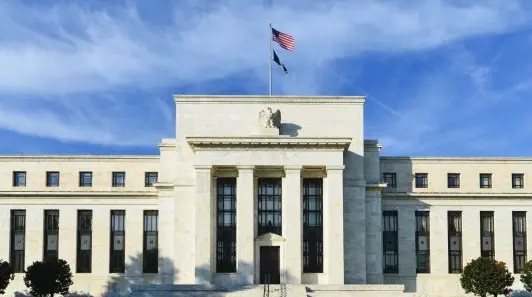The basic mechanics that potentially facilitate Repo and Treasury holdings by banks
The enhanced Supplementary Leverage Ratio (eSLR) has always been a blunt regulatory tool—simple, but not always aligned with risk. It treats all assets equally, whether they’re Treasury bonds or subprime loans. That’s fine for simplicity, but less so for risk-sensitive capital alignment. Regulators now propose a recalibration. Instead of a flat 5% minimum (3% base + 2% buffer), the buffer would be tied to each bank’s G-SIB surcharge—specifically, half of it. This would lower the requirement to between 3.5% and 4.25% for most banks.
Banks must meet the higher of two capital requirements—risk-based or leverage-based. Currently, the risk-based requirement is binding for large bank holding companies. So even if the leverage threshold drops, the actual capital held doesn’t change.
The benefit? We show that subsidiaries gain flexibility. Broker-dealers can handle more Treasuries. Repo books can grow. All without weakening capital positions. Can they really?
Some important nuances when it comes to holding versus depository subsidiaries
As of 1Q25, Global Systematically Important Banks (G-SIBs) face a $965bn risk-based capital requirement versus $923bn under leverage rules. If the eSLR drops to 3.5%, the leverage-based requirement could fall to around $700bn—a theoretical $200bn reduction. That opens up potential capacity to hold $4trn more in assets. But will that capacity be used? And where?
A key nuance: G-SIB holding companies vs. their depository institution subsidiaries
While risk-based rules are tighter for holding companies, leverage rules are often binding for subsidiaries. A binding SLR caps balance sheet growth and may even push banks toward riskier assets, since risk-based charges don’t apply incrementally.
Under the proposal, G-SIB holding company capital requirements would fall modestly—by $13bn to $918bn. But their subsidiaries would see a more significant drop—$213bn, from $789bn to $576bn. This could theoretically support $4trn in additional leverage exposure.

Simplistically, the leverage ratio is the bigger constraint on banks holding more Treasuries
During the pandemic, Treasuries were temporarily excluded from the SLR to ease participation. While regulators are seeking feedback on reintroducing such a carve-out, the current proposal doesn’t include it. Instead, the idea is that the leverage ratio shouldn’t be the binding constraint—leave that to risk-based rules.
Treasuries are 0% risk-weighted, meaning no capital is required to hold them
The same applies to repo backed by Treasuries. So, easing the SLR has a more meaningful impact here. The constraint wasn’t risk-based—it was leverage-based.
Under the proposal the US broker-dealer subsidiaries and depository institution subsidiaries could add up to c.US$3trn in more US Treasuries or reserves, according to the US agency calculations. That equates to an effective 9% of the current level of marketable debt.
What does this mean for Treasuries and repo?

Bank holdings of Treasuries are front-end heavy, but with decent longer term exposures
US banks hold $5.6trn in Treasuries and Agencies, including $4.6trn in Treasuries
Bank originated Repo nets to $0.7trn, but gross positions on both sides total around $5trn. Total bank lending is about $13trn. All these assets are treated equally under leverage rules, but not under risk-based ones.
US G-SIBs hold $1.7trn in Treasuries, mostly through subsidiaries. Primary dealer subsidiaries manage trading positions, while depository institutions hold them as investments—about 70% of the total. In 2024, primary dealers held $0.6trn in Treasuries (2.2% of the market), up from 7% to 15% of their balance sheets over the past decade. Depository subsidiaries increased their Treasury holdings from $0.4trn to $1.5trn, now 6% of the market and 7% of their balance sheets (up from 3%).
Of the $4.6trn in Treasuries held by banks, half mature in under five years, but $1.6trn have maturities of 10 years or more.

Anticipate a gradualist phase of bank buying of Treasuries rather than a big bang
While the proposal simplistically could open $4trn in asset capacity, banks won’t simply pour that into high-risk lending—risk-based constraints still apply. But Treasuries and repo, with favourable risk treatment, could see more activity. That said, banks won’t rush to buy. A skew on balance sheets is more likely to be gradual. Banks are lenders first, and credit hasn’t been notably constrained, especially with high reserves.
Still, US agencies estimate broker-dealer and depository subsidiaries could add $3trn in Treasuries or reserves—about 9% of marketable debt. The likely outcome? Greater comfort in holding Treasuries and engaging in repo, enhancing liquidity and providing a stronger market backstop in times of stress. Expect a gradual build, not a sudden surge, with most new holdings in maturities under 10 years.
Is this impactful for Treasuries? For sure if up-front inflows dominate. But a more gradual application would be less impactful. Still, it's a positive impulse. Just as the backing of stablecoins with Treasury bills is a positive for bills demand into the medium term, which also has a potential multi-trillion dollar demand effect. Again, a positive. But only meaningfully impactful if accelerated, as supply is increasing significantly too.






























































































